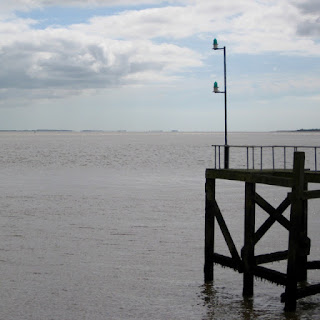An average, law-abiding citizen of
medieval Hull had little contact with national government beyond paying
occasional taxes. Instead the most
important institution in their lives was the church. Everyone was baptised within a few weeks of
their birth becoming a member of their local parish church, which in Hull meant
either Holy Trinity or the smaller St Mary’s.
Then throughout their life the church would prepare them for what was to
come after, universally acknowledged to be either heaven or hell.
Many priests worked hard to ensure that their
parishioners truly understood their faith and stood the best chance of enduring
a pleasant rather then painful eternity.
In the 1350s Archbishop Thoresby of York commissioned the ‘Lay Folks
Catechism’ that covered the foundations of Christianity including the Ten
Commandants and Seven Sacraments.
Written in concise, accessible English and containing memorable ditties,
this book was then used by priests across Yorkshire to teach their flocks.
People were expected to attend confession
and mass, said in Latin, at least once a year at Easter. Ideally of course they should do so more
often. Priests in Hull were granted
special permission by the Pope to offer Masses before daybreak to encourage
sailors to come to church before setting off on dangerous voyages. The church had its own system of courts that
dealt with actions deemed immoral or unchristian. These same courts also dealt with
more prosaic matters including regulation of marriages and resolving disputes
over wills.
Hull’s churches were situated in the
heart of the town close by the market place, a location that was really rather
practical. Their clocks were invaluable
when determining when markets should open, so much so that the town contributed
to their maintenance. And what better
place to store that important business document then the secure, brick built
Holy Trinity? Eager to find out if
Edward III and Edward Balliol had managed to recapture Berwick? Attend church on a Sunday and the priest
would give you the latest national news along with his sermon.
Parishioners
themselves were responsible for the upkeep of the nave of their church and many
took great pride in making improvements.
Whilst on his travels Thomas Gotsman spotted a charming feature in one
church; angels that ascended and descended during mass. Impressed he left £10 in his will to recreate
the same in Holy Trinity. Walls were
covered in colourful paintings retelling popular bible stories and tiles on the
floor of Holy Trinity depicted birds, flowers and heraldic lions. During a bustle of busy day church could offer
a place to rest protected from the elements amidst rather pleasant surroundings.
Photo: View of Holy Trinity church from North Church Side showing transept
built in the 14th Century.



